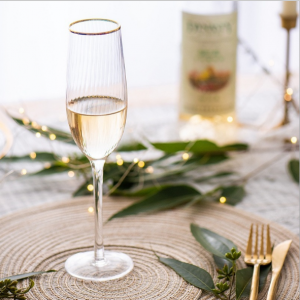Glassware has played a significant role in various cultures around the world, serving both functional and artistic purposes. Different cultures have developed unique glassmaking techniques and styles that reflect their traditions, aesthetics, and societal values. Here’s a look at how functional and artistic glassware have evolved in different cultures:
1. Murano, Italy:
- Murano, a small island near Venice, Italy, is renowned for its centuries-old glassmaking tradition. Murano glass is celebrated for its exquisite craftsmanship and artistic designs. The Murano glassblowers have mastered techniques like millefiori (creating intricate patterns within the glass) and latticino (using colored glass threads to create patterns).
2. Islamic Glassware:
- The Islamic world has a rich history of glassmaking, particularly during the medieval period. Islamic glassware is characterized by intricate geometric patterns, calligraphy, and vibrant colors. Techniques like enameling, gilding, and cutting were used to create decorative pieces and functional objects.
3. Chinese Glassware:
- Ancient Chinese glassmaking techniques date back to the Han Dynasty. Chinese glassware often featured delicate designs, such as engraved scenes, landscapes, and mythological figures. The use of colored glass and techniques like cameo carving and overlay glass were prominent.
4. Scandinavian Glass:
- Scandinavian countries like Sweden and Finland have a strong tradition of glassmaking. Scandinavian glassware is known for its clean lines, minimalist designs, and emphasis on functionality. Brands like Orrefors and Iittala have created iconic glassware that blends aesthetics with practicality.
5. Native American Glass Art:
- Native American tribes in North America have embraced glass artistry, incorporating traditional designs and motifs into glasswork. Modern Native American glass artists blend their cultural heritage with contemporary techniques to create unique and meaningful pieces.
6. Middle Eastern Glass Mosaic:
- Middle Eastern cultures have a history of using glass in mosaic art. Intricately designed glass tiles are used to create intricate patterns and decorate buildings, mosques, and other architectural structures.
7. Czech and Bohemian Glass:
- The Czech Republic and Bohemia have a strong glassmaking heritage that dates back to the Middle Ages. These regions are known for producing decorative glassware with intricate patterns, vibrant colors, and unique shapes.
8. Japanese Glass Art:
- Japanese glass artists have embraced traditional techniques and combined them with modern influences. Edo Kiriko, a style of cut glass, is a prime example of how Japanese glass art balances precision and aesthetics.
9. American Studio Glass Movement:
- The American Studio Glass Movement, starting in the mid-20th century, led to the exploration of glass as a sculptural and artistic medium. Artists like Dale Chihuly and Harvey Littleton pioneered this movement, creating stunning and innovative glass sculptures.
These examples showcase how different cultures have contributed to the evolution of glassware, from functional vessels to intricate works of art. The diversity of glassmaking techniques, styles, and artistic expressions around the world highlights the universal appeal and creativity associated with this fascinating medium.
















